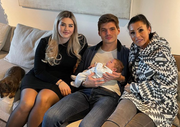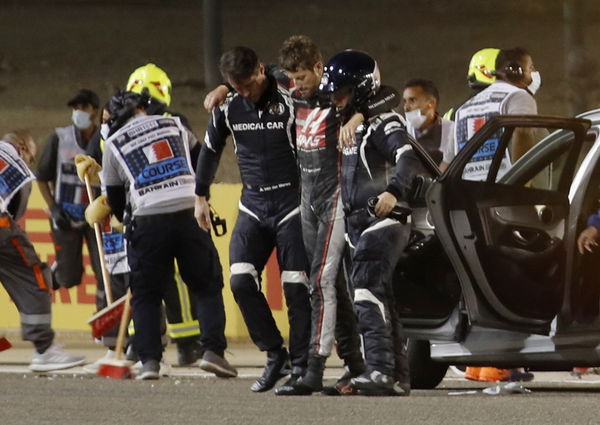
Getty
Formula One, F1- Scuderia Ferrari racer, Sebastian Vettel Courtesy: GETTY

Getty
Formula One, F1- Scuderia Ferrari racer, Sebastian Vettel Courtesy: GETTY
For fans watching F1 since 2017, they might be familiar with ‘Halo’. However, there’s a chance that the relatively new audience isn’t aware of it. Since it has become a part of the car now. However, people are scrambling to know more about the device that saved Romain Grosjean‘s life at Bahrain GP. So, what is Halo?
Watch What’s Trending Now!
In simpler terms, it is the 3-legged curved bar that places in front of a driver’s cockpit. It’s made out of high strength titanium, and the weight of this device is roughly 9 kilograms. The primary function of this device is to protect the head of the drivers, and according to FIA, the survival chances of a driver go up by 17% when a car is equipped with it.
ADVERTISEMENT
Origins of Halo in F1
The FIA were proposing different systems around 2015 to make driving safer in F1. They were looking at previous incidents from falling debris of cars and drivers slamming headfirst into the barriers. Thus, they hoped to reduce the fatality rate if a similar incident was to happen. After several test runs, FIA officially brought the halo to F1 in 2018. Since then, it has been a part of F2, F3, and Formula E too.
ADVERTISEMENT
ADVERTISEMENT
Early resistance to Halo in Formula 1
It’s safe to say that people in the F1 circle weren’t a fan of Halo. It drew criticism for making the car ‘aesthetically unappealing’ and for adding to the weight of the car. The late Niki Lauda thought it destroyed the essence of racing and Lewis Hamilton belittled it as the ‘worst looking modification in F1 history’. However, the most notable remark came from Mercedes Team Principal Toto Wolff. Bashing it, he said –
Top Stories
Max Verstappen’s Siblings: Everything We Know About Victoria, Blue Jaye, Jason Jaxx, and Mila Faye

Who Is Canadian F1 Billionaire Lawrence Stroll’s Daughter & Heiress Chloe Stroll?

How Does F1 Qualifying Work?

Instead of Protecting Golden Boy Max Verstappen, Red Bull Once Berated Him for a Foolish Move: “Needs to Control Himself”

3 Years After His Death, Niki Lauda’s Wife Brutally Disrespects Him to Initiate $32,000,000 Battle Against Own Children

“I’m not impressed with the whole thing, and if you give me a chainsaw, I would take it off. I think we need to look after the driver’s safety but what we have implemented is aesthetically not appealing.”
ADVERTISEMENT
His stance has now changed

Reuters
Formula One F1 – Bahrain Grand Prix – Bahrain International Circuit, Sakhir, Bahrain – November 29, 2020 Haas’ Romain Grosjean walks away from the crash scene with the help of medical officers after crashing out of the race Pool via REUTERS/Hamad I Mohammed
It’s in human nature to be reluctant to change. The Halo has been saving lives since coming to the fore. Most recently, it saved the Haas driver’s life in Bahrain. His car was piercing the lower half of the barrier with his head close to the upper half. The halo came to his rescue.
Credit where credit’s due. The FIA was brilliant in battling the early resistance. They are leading the quest for better safety in Formula 1, and long may it continue.
ADVERTISEMENT
ADVERTISEMENT
ADVERTISEMENT
ADVERTISEMENT

